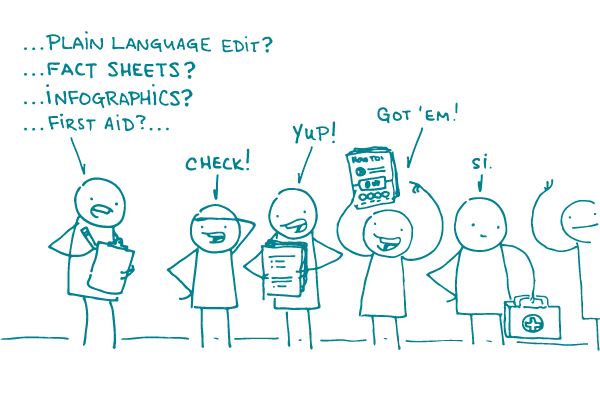
This year’s hurricane season has been pretty brutal so far. Parts of the United States and the Caribbean are just beginning their recovery from the devastation of Hurricane Irma and Hurricane Harvey. And that leaves many of us wondering how we can take action, either personally or professionally.
As health communicators, we have a unique responsibility in an emergency since it’s our job to make information easy for everyone to understand. This is especially important during natural disasters or other public health crises.
From sharing tips for making an emergency supply kit to spreading the word about how to clean up after a flood, it’s on us to make sure important safety messages are clear to consumers — before, during, and after an emergency.
So what do we need to keep in mind when we’re communicating in an emergency?
- Write in plain language. Use short, bulleted lists with actionable headers to communicate easy-to-understand steps for staying safe in a disaster. Check out this example from healthfinder.gov.
- Be specific in your word choices. Vague terms like “respond” and “hazardous” are never helpful, but an emergency is an especially bad time to keep people guessing about what you mean.
- Make your messages accessible to everyone. Think about using icon-driven emergency communication, which can help you reach people with limited English skills and people who have cognitive delays.
- Be honest — but avoid creating unnecessary panic. Be clear about what you know and don’t know. Put risk in context and point out what isn’t dangerous about a situation, too.
- Remember that clear visual communication matters. Infographics can be an effective strategy for communicating weather safety tips — just make sure they’re accurate and well designed.
And if you’d like to donate to help current recovery efforts, check out these guides from The New York Times:
The bottom line: Making health messages easier for everyone to understand is always important — but it’s even more critical in an emergency.
Browse recent posts